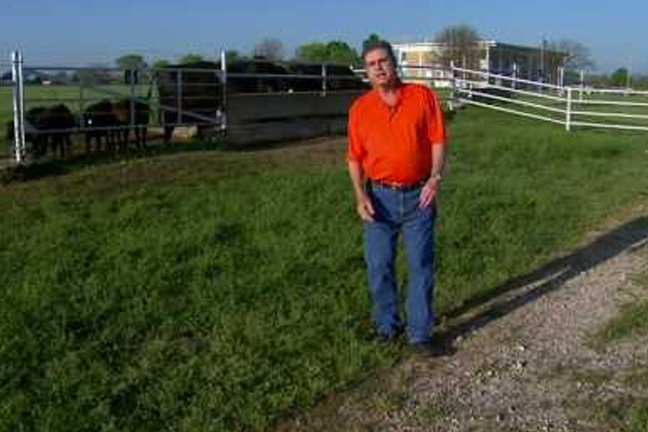
Agricultural News
One Calving Season versus Two Calving Seasons: Glenn Selk Looks at Sustainable Options
Thu, 28 Feb 2013 08:18:03 CST

Writing in the latest edition of the Cow-Calf Newsletter, Glenn Selk, Oklahoma State University Emeritus Extension Animal Scientist, offers some considerations on how best to rebuild a cow herd.
The beef industry has seen a "down-sizing" due to the drought affecting many cow herds. Much has been written and spoken about the need to "rebuild the cow herd." When the return of good moisture allows for adequate forage growth and pasture conditions to improve, ranchers may need to self-examine their operations and look at breeding season alternatives that provide greater sustainability moving forward.
Southern Plains producers have many alternatives for calving seasons. Spring and fall are the seasons of choice. Traditionally many herds have been bred to calve in February, March, and April. Some fall calving seasons have arisen from elongated spring seasons. Other fall calving herds were created by design to take advantage of improved cow condition at calving, improved market conditions when calves and cull cows are sold, and less weather (heat) stress on cows and bulls during the breeding season.
Deciding on the use of one calving season or two calving seasons is a big first decision when producers are choosing calving seasons. Two calving seasons fits best for herds with more than 80 cows. To take full advantage of the economies of scale, a ranch needs to produce at least 20 steer calves in the same season to realize the price advantage associated with increased lot size. Therefore having forty cows in each season as a minimum seems to make some sense.
Using two seasons instead of just one can reduce bull costs a great deal. Properly developed and cared-for bulls can be used in both the fall and the spring, therefore reducing the bull battery by about half.
Another small advantage to having two calving seasons is the capability of taking fall-born heifers and holding them another few months to go in to the spring season and vice versa. Because of this, replacement heifers are always 2 1/2 years at first calving instead of 2 years old. These heifers should be more likely to breed early in the breeding season and have slightly less calving difficulty. Research has shown that these differences are very small, therefore the cost of the other six months feed must be minimal to make this a paying proposition. A disadvantage to breeding heifers to calve at 30 months is found when "open" heifers are culled. They are too old to go to the feedlot and produce high-grading carcasses. Therefore, the older heifers will be discounted (price per pound) when marketed after an unsuccessful attempt to get them bred.
Some producers like the dual calving seasons because of the spread of the marketing risk. Having half of the calf crop sold at two different times allows for some smoothing of the cattle cycle roller coaster ride. It is important that an adequate number of calves be born together to a make a marketable package that will not be discounted because of small lot size.
There are advantages and disadvantages to a split calving season. Having a split calving season is NOT for everybody, but may be an alternative for some Southern Plains producers.
WebReadyTM Powered by WireReady® NSI
Top Agricultural News
More Headlines...



















